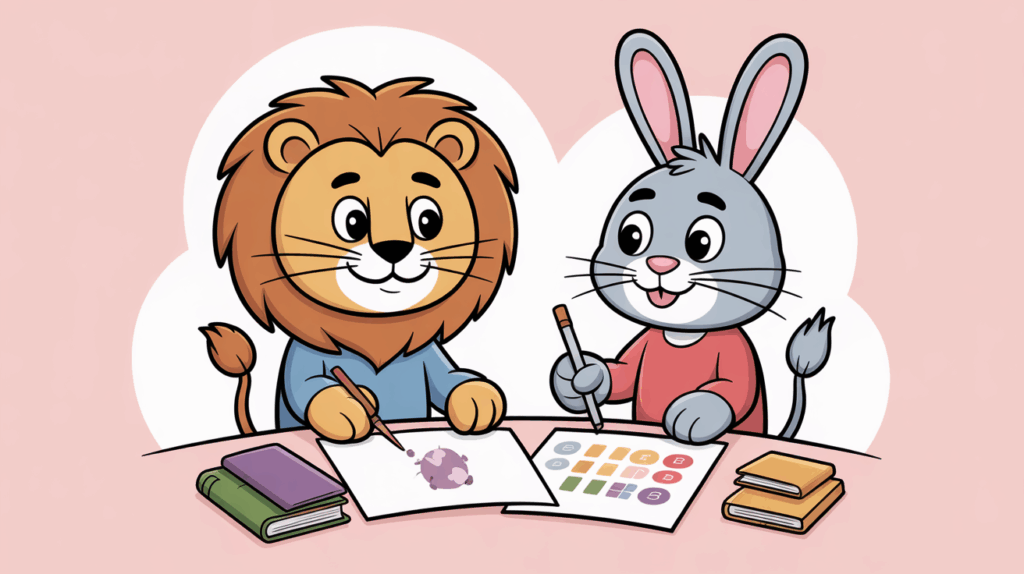
Introduction 🌱
When discussing mbti teamwork collaboration, it becomes clear that personality types greatly influence how individuals interact in group settings. From brainstorming to conflict resolution, each type has unique strengths and challenges that shape collaboration. This post explores how different MBTI types thrive in teamwork, providing insights that can help teams improve communication, efficiency, and harmony.
Personality Overview 🔮
The MBTI framework highlights differences in how people perceive the world and make decisions. These differences strongly affect teamwork. For example, Extraverts often energize group discussions, while Introverts contribute through thoughtful, focused input. Thinkers bring objective analysis, whereas Feelers prioritize harmony and morale. Recognizing these dynamics helps leaders and teammates build more balanced, effective groups.
In modern workplaces, these distinctions show up clearly. An Extraverted manager may inspire energy in team meetings, while an Introverted team member ensures the plan is grounded in well-considered details. Similarly, Feeling types often play a crucial role in keeping morale high during stressful projects, while Thinking types ensure decisions are made logically and fairly. Each function complements the other, creating a richer, more diverse team environment. This blend illustrates why mbti teamwork collaboration is such an essential factor in organizational success.
Key Traits 📚
Here are 7 proven ways MBTI types show their strengths in teamwork collaboration:
- Extraverts (E) – Drive energy, keep discussions alive, and motivate others.
- Introverts (I) – Offer depth, reflection, and focused problem-solving.
- Sensing Types (S) – Pay attention to details, practical tasks, and grounded action steps.
- Intuitive Types (N) – Bring big-picture thinking, innovation, and creative strategies.
- Thinking Types (T) – Add logical decision-making and critical analysis.
- Feeling Types (F) – Foster empathy, resolve conflicts, and maintain team spirit.
- Judging vs. Perceiving (J/P) – Judging types provide structure and deadlines, while Perceiving types keep flexibility and adaptability.
To illustrate, consider a project team developing a new product. Sensing types might ensure accurate data collection, Intuitive types brainstorm creative possibilities, Thinkers evaluate feasibility, and Feelers consider user experience and emotional appeal. Judging types keep the project on schedule, while Perceivers adapt to sudden market changes. Together, these dynamics prevent blind spots and improve overall outcomes. These examples highlight how mbti teamwork collaboration draws strength from diversity.
Comparisons ⚔️
Consider how an ENTJ and an INFP collaborate. ENTJs lead with structure, efficiency, and goal orientation. INFPs bring emotional awareness, creativity, and values-driven perspectives. While their styles may clash at times, their differences can complement each other when both respect and integrate one another’s strengths.
By contrast, two similar types, such as ESTPs, may thrive in fast-moving problem-solving but could struggle with long-term planning unless supported by more structured teammates. These comparisons show how balance is often more important than similarity.
Another example is when an INFJ works with an ESTJ. The INFJ focuses on vision, empathy, and long-term human impact, while the ESTJ ensures procedures are followed and resources are well managed. Together, they combine heart and efficiency, achieving results that neither could reach alone. These partnerships reveal how mbti teamwork collaboration enhances not only productivity but also team satisfaction.
Lessons 💡
From examining mbti teamwork collaboration, we can learn:
- Effective teamwork comes from diversity of strengths, not uniformity.
- Conflict often arises when types misunderstand each other’s priorities.
- Leaders can assign roles more effectively by recognizing natural tendencies.
- Teams that honor both structure (J) and flexibility (P) achieve sustainable success.
For modern workplaces, this means acknowledging that no single type is “best.” Instead, collaboration thrives when differences are seen as complementary assets. Teams that encourage open dialogue, adapt roles based on personality, and appreciate each function’s value tend to outperform those that force everyone into the same mold. This proves the long-term benefit of mastering mbti teamwork collaboration in practice.
Final Thoughts 🌟
Understanding mbti teamwork collaboration provides powerful insights into how teams can thrive. By blending logical thinkers, empathetic feelers, structured planners, and spontaneous innovators, groups can overcome challenges and maximize results. When teams learn to value each contribution, collaboration becomes more than just working together—it becomes thriving together. thinkers, empathetic feelers, structured planners, and spontaneous innovators, groups can overcome challenges and maximize results. When teams learn to value each contribution, collaboration becomes more than just working together—it becomes thriving together.